Converse, Inverse, and Contrapositive of a Conditional Statement
What we want to achieve in this lesson is to be familiar with the fundamental rules on how to convert or rewrite a conditional statement into its converse, inverse, and contrapositive.
But first, we need to review what a conditional statement is because it is the foundation or precursor of the three related sentences that we are going to discuss in this lesson.
What is a Conditional Statement?
A conditional statement takes the form “If [latex]p[/latex], then [latex]q[/latex]” where [latex]p[/latex] is the hypothesis while [latex]q[/latex] is the conclusion. A conditional statement is also known as an implication.
Sometimes you may encounter (from other textbooks or resources) the words “antecedent” for the hypothesis and “consequent” for the conclusion. Don’t worry, they mean the same thing.
In addition, the statement “If [latex]p[/latex], then [latex]q[/latex]” is commonly written as the statement “[latex]p[/latex] implies [latex]q[/latex]” which is expressed symbolically as [latex]{\color{blue}p} \to {\color{red}q}[/latex].
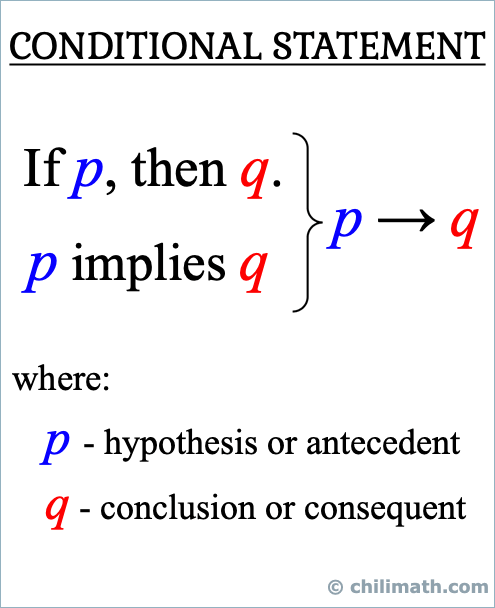
Given a conditional statement, we can create related sentences namely: converse, inverse, and contrapositive. They are related sentences because they are all based on the original conditional statement.
Let’s go over each one of them!
The Converse of a Conditional Statement
For a given conditional statement [latex]{\color{blue}p} \to {\color{red}q}[/latex], we can write the converse statement by interchanging or swapping the roles of the hypothesis and conclusion of the original conditional statement. Therefore, the converse is the implication [latex]{\color{red}q} \to {\color{blue}p}[/latex].
Notice, the hypothesis [latex]\large{\color{blue}p}[/latex] of the conditional statement becomes the conclusion of the converse. On the other hand, the conclusion of the conditional statement [latex]\large{\color{red}p}[/latex] becomes the hypothesis of the converse.
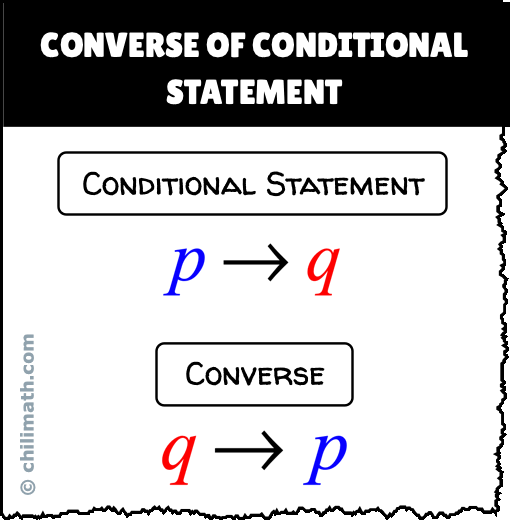
The Inverse of a Conditional Statement
When you’re given a conditional statement [latex]{\color{blue}p} \to {\color{red}q}[/latex], the inverse statement is created by negating both the hypothesis and conclusion of the original conditional statement. Thus, the inverse is the implication ~[latex]\color{blue}p[/latex] [latex]\to[/latex] ~[latex]\color{red}q[/latex].
The symbol ~[latex]\color{blue}p[/latex] is read as “not [latex]p[/latex]” while ~[latex]\color{red}q[/latex] is read as “not [latex]q[/latex]” .
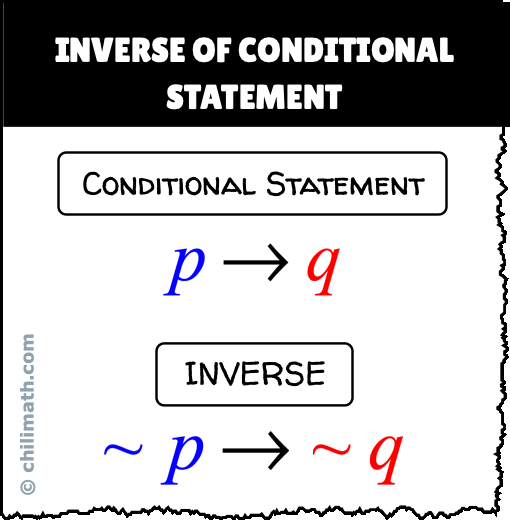
The Contrapositive of a Conditional Statement
Suppose you have the conditional statement [latex]{\color{blue}p} \to {\color{red}q}[/latex], we compose the contrapositive statement by interchanging the hypothesis and conclusion of the inverse of the same conditional statement.
In other words, to find the contrapositive, we first find the inverse of the given conditional statement then swap the roles of the hypothesis and conclusion. Therefore, the contrapositive of the conditional statement [latex]{\color{blue}p} \to {\color{red}q}[/latex] is the implication ~[latex]\color{red}q[/latex] [latex]\to[/latex] ~[latex]\color{blue}p[/latex].
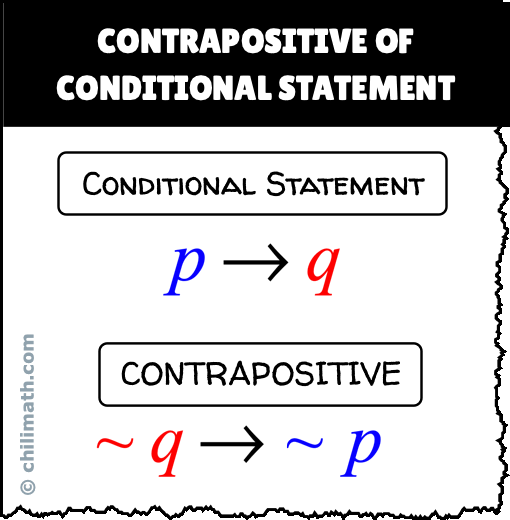
Truth Tables of a Conditional Statement, and its Converse, Inverse, and Contrapositive
Now that we know how to symbolically write the converse, inverse, and contrapositive of a given conditional statement, it is time to state some interesting facts about these logical statements.
To save time, I have combined all the truth tables of a conditional statement, and its converse, inverse, and contrapositive into a single table.
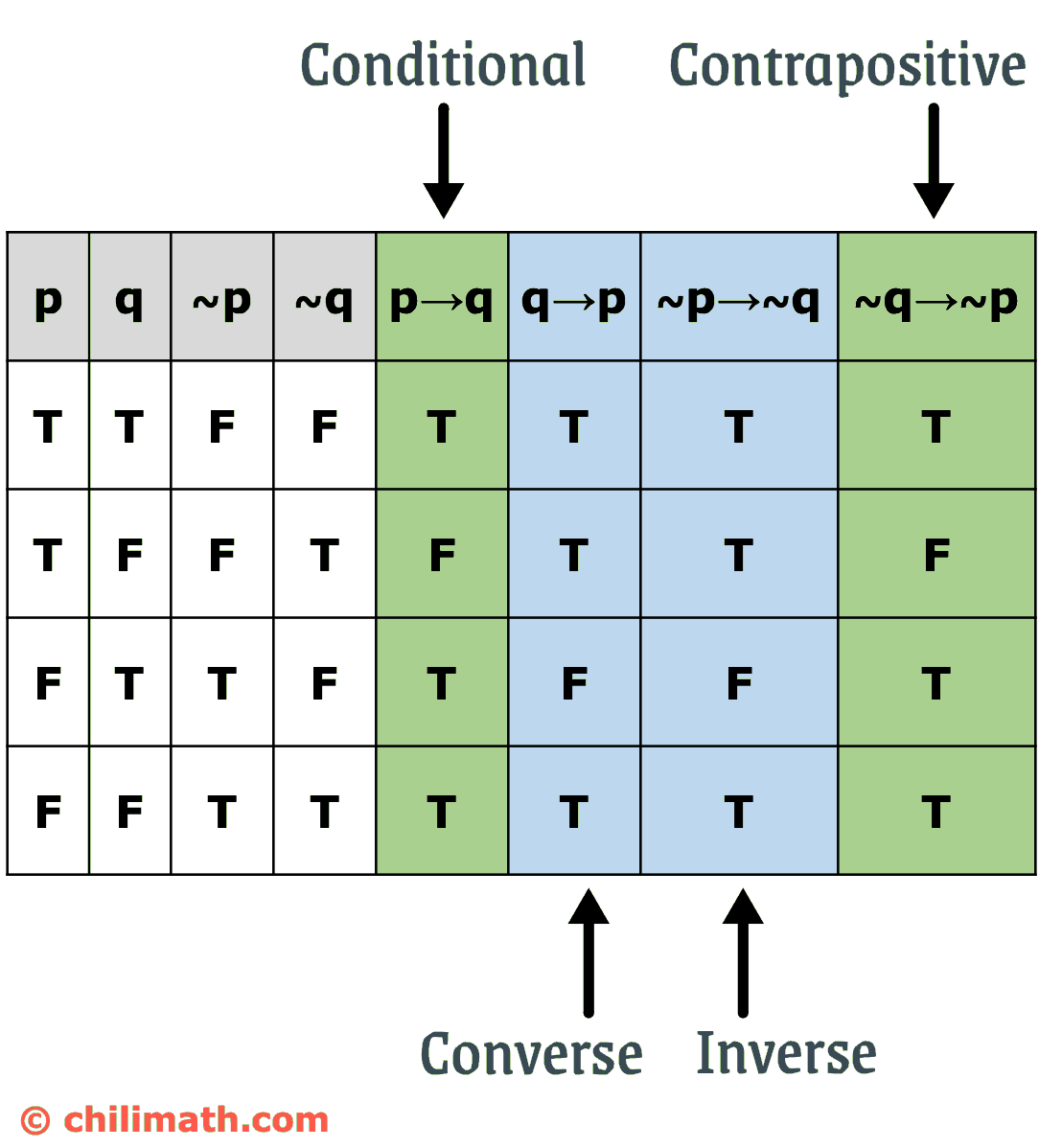
Here are some of the important findings regarding the table above:
- The conditional statement is NOT logically equivalent to its converse and inverse.
- The conditional statement is logically equivalent to its contrapositive. Thus, [latex]{\color{blue}p} \to {\color{red}q}[/latex] [latex] \equiv [/latex] ~[latex]\color{red}q[/latex] [latex]\to[/latex] ~[latex]\color{blue}p[/latex].
- The converse is logically equivalent to the inverse of the original conditional statement. Therefore, [latex]{\color{red}q} \to {\color{blue}p}[/latex] [latex] \equiv [/latex] ~[latex]\color{blue}p[/latex] [latex]\to[/latex] ~[latex]\color{red}q[/latex].
You may also be interested in these related math lessons or tutorials:
Introduction to Truth Tables, Statements, and Logical Connectives
Truth Tables of Five (5) Common Logical Connectives or Operators
